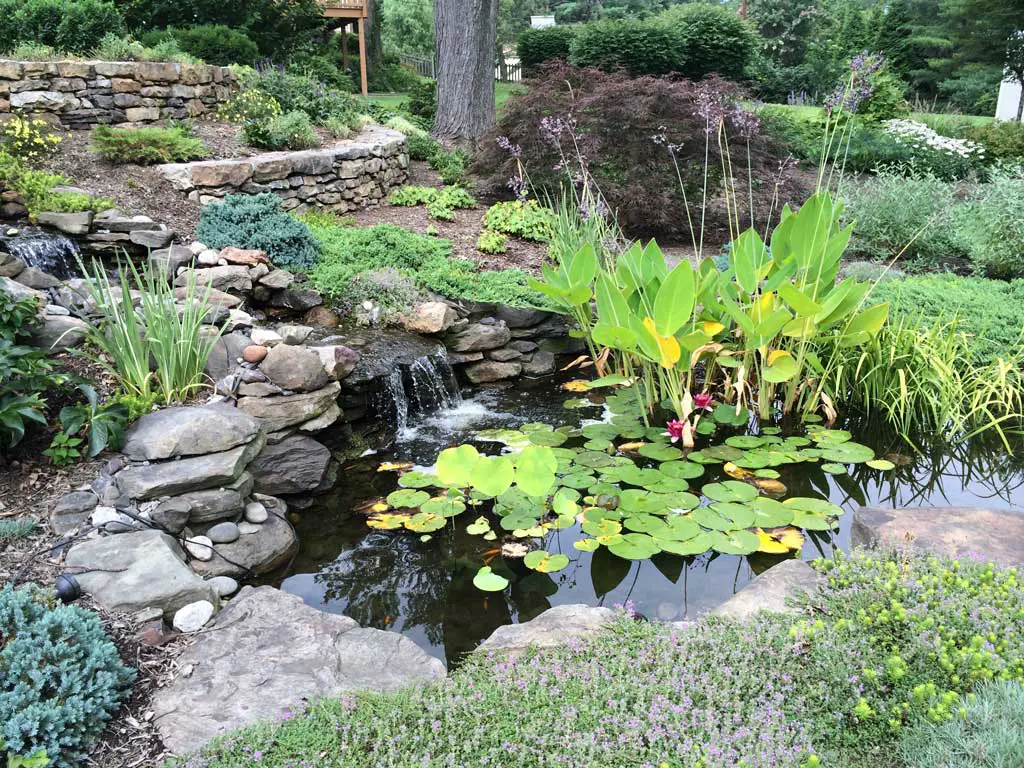Building a pond on a hill can be a challenging but rewarding project. It requires careful planning and execution to ensure that the pond is not only visually appealing but also functions properly. Whether you’re interested in creating a tranquil water feature, a habitat for wildlife, or a source of irrigation, building a pond on a hill can enhance the beauty and functionality of your landscape.
1. Site Selection and Preparation
Before you start digging, it’s essential to carefully select the site for your pond. Consider the natural topography of the hill, the direction of water flow, and the soil composition. Choose a location that is visually appealing and harmonizes with the surrounding landscape. Once you’ve identified the site, clear the area of any debris, rocks, and vegetation.
2. Pond Design and Layout
Designing the pond involves creating a plan that integrates the natural features of the hillside. Consider the shape and size of the pond, the depth of the water, and any additional features such as waterfalls or streams. The layout should take into account the natural slope of the hill and aim to create a balanced and visually appealing water feature.

Credit: www.pinterest.com
3. Excavation and Grading
Excavation is a critical step in building a pond on a hill. The topography of the hill will determine the extent of excavation required. Carefully grade the slope to create a level base for the pond. Take into consideration the inflow and outflow of water to ensure proper drainage and prevent erosion. It’s important to maintain the natural contours of the hill to blend the pond seamlessly into the landscape.
4. Pond Liner Installation
Once the excavation and grading are complete, it’s time to install the pond liner. Choose a high-quality liner that is durable and resistant to punctures. Properly install and secure the liner to prevent leaks and ensure a long-lasting pond. Consider using protective underlayment to cushion the liner and provide an additional layer of protection against sharp objects and roots.
5. Water Source and Circulation
Establishing a reliable water source is crucial for maintaining the pond’s water level, especially on a hill. Consider installing a water supply line or utilizing natural springs or rainwater runoff. Implement a circulation system to aerate the water and prevent stagnation. This can include pumps, filters, and aerators to maintain water clarity and quality.
6. Landscaping and Planting
Enhance the natural beauty of the pond by incorporating appropriate landscaping and planting. Select native aquatic plants and marginal vegetation to stabilize the soil, provide habitat for wildlife, and improve water quality. Consider the use of rocks, boulders, and driftwood to create naturalistic features and enhance the aesthetic appeal of the pond.

Credit: www.youtube.com
7. Maintenance and Care
Once the pond is constructed, ongoing maintenance is essential to ensure its longevity and functionality. Regularly inspect the pond for leaks, sediment buildup, and invasive plant species. Monitor water quality parameters such as pH, oxygen levels, and nutrient concentrations. Implement a maintenance schedule for cleaning, pruning, and general upkeep.
8. Environmental Considerations
Building a pond on a hill requires careful consideration of environmental impacts. Minimize disturbance to the surrounding ecosystem and protect natural habitats. Implement erosion control measures such as vegetative buffers and retaining walls to prevent soil erosion and sediment runoff. Consider the use of environmentally friendly materials and practices throughout the construction process.
9. Enjoying the Pond
Once the pond is complete and thriving, take the time to enjoy the tranquil beauty and wildlife it attracts. Whether it’s observing the reflections of the surrounding landscape, listening to the soothing sounds of flowing water, or simply appreciating the biodiversity it supports, a well-built pond on a hill can be a source of joy and relaxation for years to come.
Conclusion
Building a pond on a hill presents unique challenges, but with careful planning and execution, it can be a highly rewarding endeavor. By considering the site selection, design, excavation, water source, landscaping, and maintenance, you can create a harmonious water feature that enhances the natural beauty of the hillside while providing valuable habitat for wildlife and a serene retreat for yourself. With proper care and consideration for the environment, a pond on a hill can be a sustainable and aesthetically pleasing addition to your landscape.





